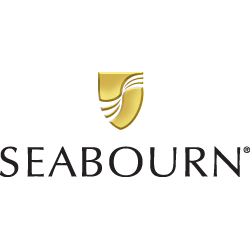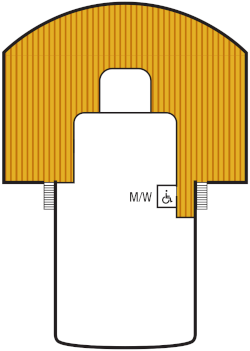
Construction for Seabourn Pursuit began in fall 2020 during a ceremony in San Giorgo di Nogare, Italy, and the ship delivery was in February 2023, with its sister ship, Seabourn Venture, delivered in March 2022.
Seabourn Pursuit is the second in its class of Seabourn expedition ships. Both Seabourn Pursuit and sister ship Seabourn Venture are designed and built for diverse environments to PC6 Polar Class standards and include modern hardware and technology that extend the ships’ global deployment and capabilities. Each Expedition ship carries two custom-built submarines, 24 Zodiacs, kayaks, and a 26-person expert expedition team whose role is to engage, guide and inform guests throughout each voyage.
The Seabourn Expedition ships continue onward by exploring the waters and landscapes of Greenland, Iceland and Norway throughout the spring and early summer, in some instances retracing the path of the Vikings to the frontier town of Tromso while carving their way through the inside passage of the Norwegian fjords along the way. An annual highlight in the Seabourn Expedition calendar is the Northwest Passage journey through some of the most remote areas in the Northern Hemisphere from Kangerlussuaq, Greenland to Nome, Alaska. Itineraries for the Seabourn Pursuit Seabourn Pursuit spends her winter season travelling the remote South Pacific, Indonesia and Australia’s beautiful Kimberley region.
Please note: Stateroom images and features are samples only. Actual furniture, fixtures, colors, configurations and window/porthole views may vary.

Named after evolutionist Charles Darwin, this tropical city on the top end of Australia is a former frontier town with a rough-and-tumble past. Darwin's growth was achieved back in 1871 with the discovery of gold at Pine Creek, and today a number of historic buildings from that era remain. Darwin is also the center of the aboriginal community, the world's oldest culture. From here, you can visit Kakadu National Park, a World Heritage Site renowned not only for its Australian wildlife but Aboriginal rock art.
New Guinea is one of Asia's most spectacular regions for tourism. A living museum of natural history, untouched rain forests, white-sand beaches, snow-capped mountains straddling the equator, jewel-like lakes and moss-carpeted forests shelter some of the world's most astonishing wildlife. In the highlands valley of Baliem, Stone-Age tribes sport boar tusk nose rings, necklaces of harvested spider webs, and reed skirts for women. The custom of smearing their bodies with red or white clay for warmth has given rise to the nickname "mud people." In Jayapura, a picture-postcard harbor with a backdrop of eternally green hills greets travelers who visit this Indonesian part of New Guinea. Indeed, the only access is by sea, and aside from a few roads around the town, the only means of travel to the interior is on foot or by light aircraft. Streets bustle with an interesting mix of tribesmen, vendors, Minang merchants, Bugis fishermen or sailors from Makassar.
Vanimo is a coastal town located in the Sandaun Province of Papua New Guinea, known for its beautiful beaches and vibrant culture. Situated near the border with Indonesia, it offers a unique blend of local traditions and cross-border influences. Visitors can enjoy water activities such as surfing and snorkeling, explore nearby rainforests, and experience the rich cultural heritage of the local communities.
...Lautoka has countless natural treasures and unmolested habitats that are simply glorious... Sugar is the official crop of Lautoka, and September is the best time of the year to visit, as the entire town celebrates the enchanting Sugar Festival...